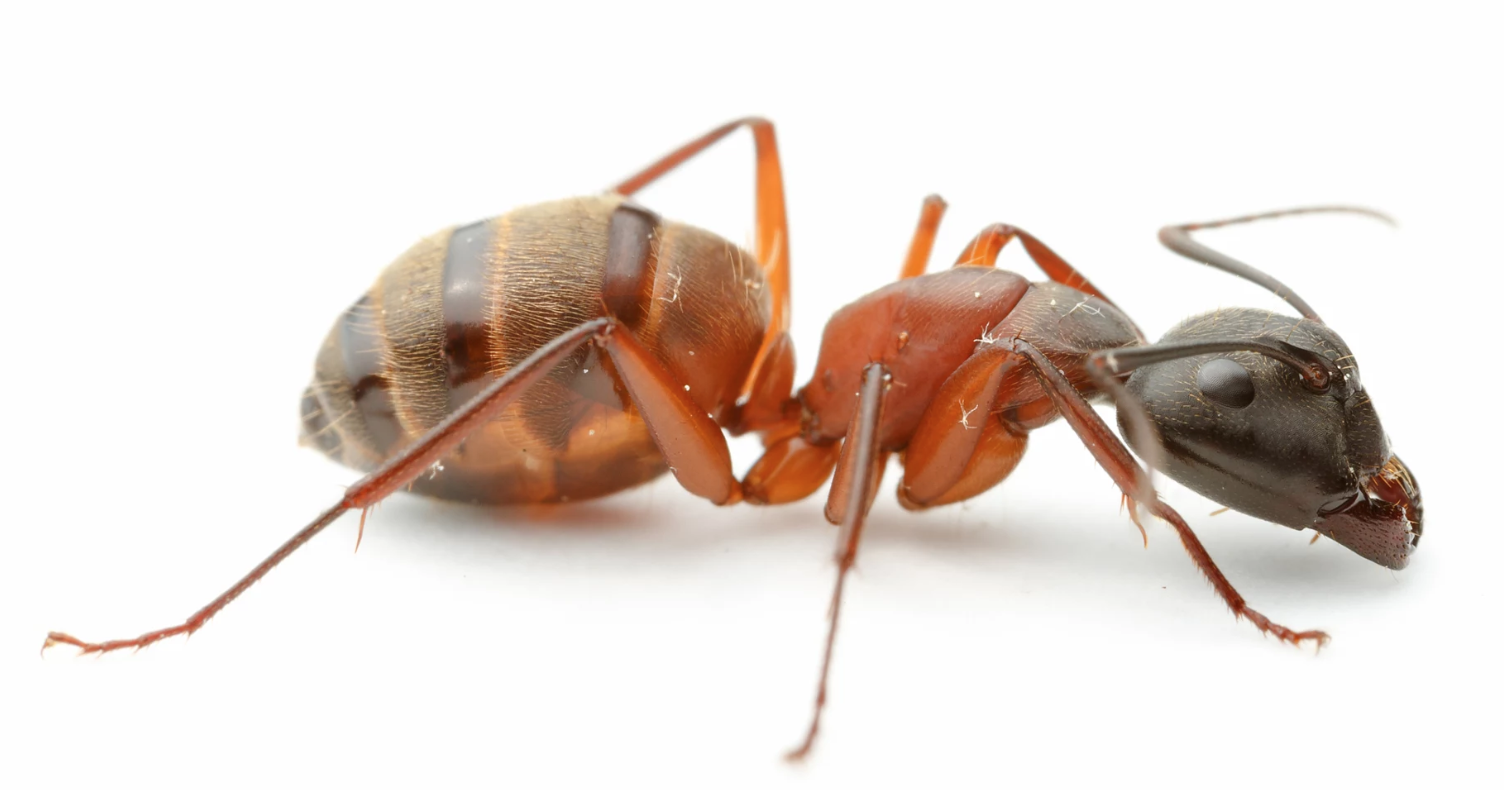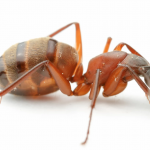
This common species is usually darkly bicolor red. It seems to often largely replace C. pennsylvanicus in southern Ohio woodlands Chromoaiodes is nearly identical to C. pennsylvanicus in everywhere with exception to color.
Head and gaster black, alitrunk yellowish- to dark reddish-brown, sometimes nearly concolorous with head and gaster, legs commonly nearly concolorous with head and gaster, pronotum dorsally often suffused with black, base of gaster often tinged with reddish-brown, mandibles slightly redder than adjacent head, coxae, trochanters, and femora usually concolorous with alitrunk, legs darker distally; body with minute microsculpture; surface mostly satiny or dull, only weakly glossy in small areas, appressed pubescence of gaster relatively long, dense, and golden in color. The long appressed gastral pubescence, as described in the key, is diagnostic.
Although well-known as C. ferrugineus (earlier authors often using the archaic quadrinomial above), this name is a junior primary homonym of Formica ferruginea Christ, 1791 and must therefore be replaced.
Size
Nuptial Flight Dates
Habitat
Food
Behavior
Nesting Information
Verified Locales (counties)
Adams, Ashtabula, Athens, Auglaize, Belmont, Brown, Butler, Carroll, Champaign, Clark, Clermont, Clinton, Columbiana, Coshocton, Crawford, Cuyahoga, Darke, Defiance, Delaware, Erie, Fairfield, Fayette, Franklin, Fulton, Greene, Guernsey, Hamilton, Harrison, Henry, Highland, Hocking, Holmes, Huron, Jackson, Jefferson, Knox, Lake, Lawrence, Licking, Logan, Lorain, Lucas, Madison, Marion, Meigs, Miami, Montgomery, Morgan, Morrow, Muskingum, Noble, Ottawa, Perry, Pickaway, Pike, Preble, Ross, Sandusky, Scioto, Seneca, Shelby, Stark, Tuscarawas, Union, Vinton, Warren, Wood,



Ayden
I’m going to start an ant colony this year and I can’t wait